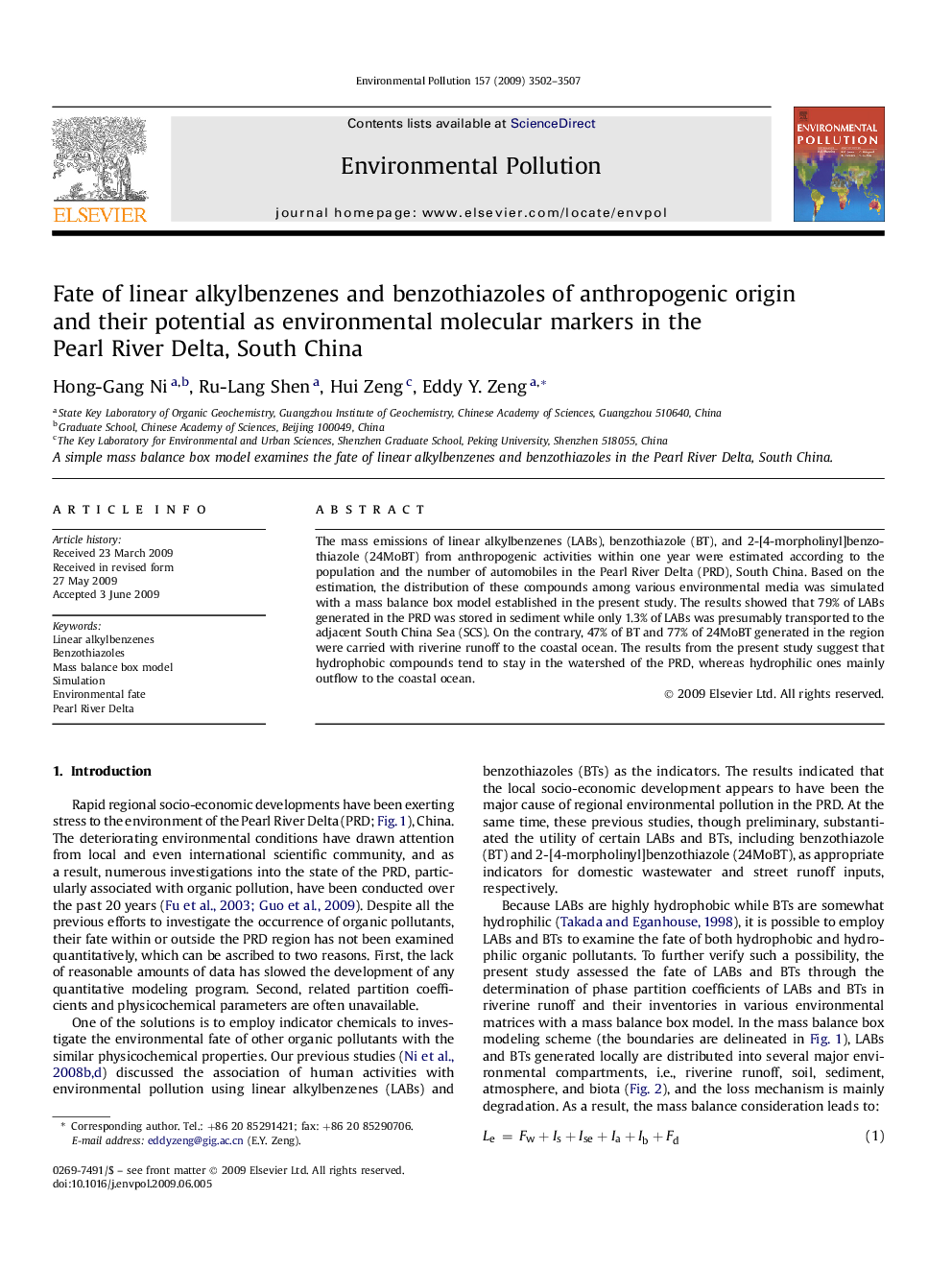| Article ID | Journal | Published Year | Pages | File Type |
|---|---|---|---|---|
| 4426046 | Environmental Pollution | 2009 | 6 Pages |
The mass emissions of linear alkylbenzenes (LABs), benzothiazole (BT), and 2-[4-morpholinyl]benzothiazole (24MoBT) from anthropogenic activities within one year were estimated according to the population and the number of automobiles in the Pearl River Delta (PRD), South China. Based on the estimation, the distribution of these compounds among various environmental media was simulated with a mass balance box model established in the present study. The results showed that 79% of LABs generated in the PRD was stored in sediment while only 1.3% of LABs was presumably transported to the adjacent South China Sea (SCS). On the contrary, 47% of BT and 77% of 24MoBT generated in the region were carried with riverine runoff to the coastal ocean. The results from the present study suggest that hydrophobic compounds tend to stay in the watershed of the PRD, whereas hydrophilic ones mainly outflow to the coastal ocean.
